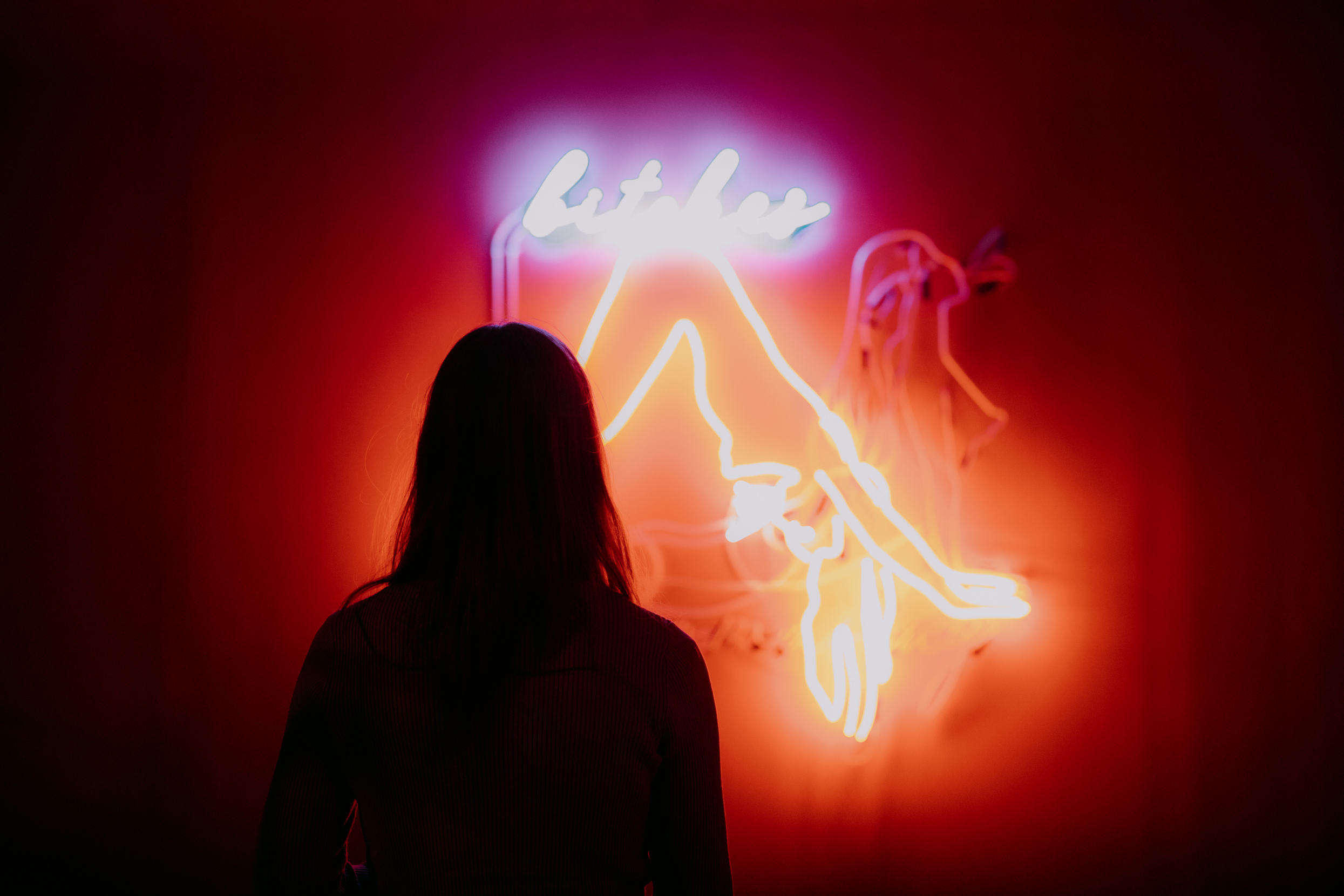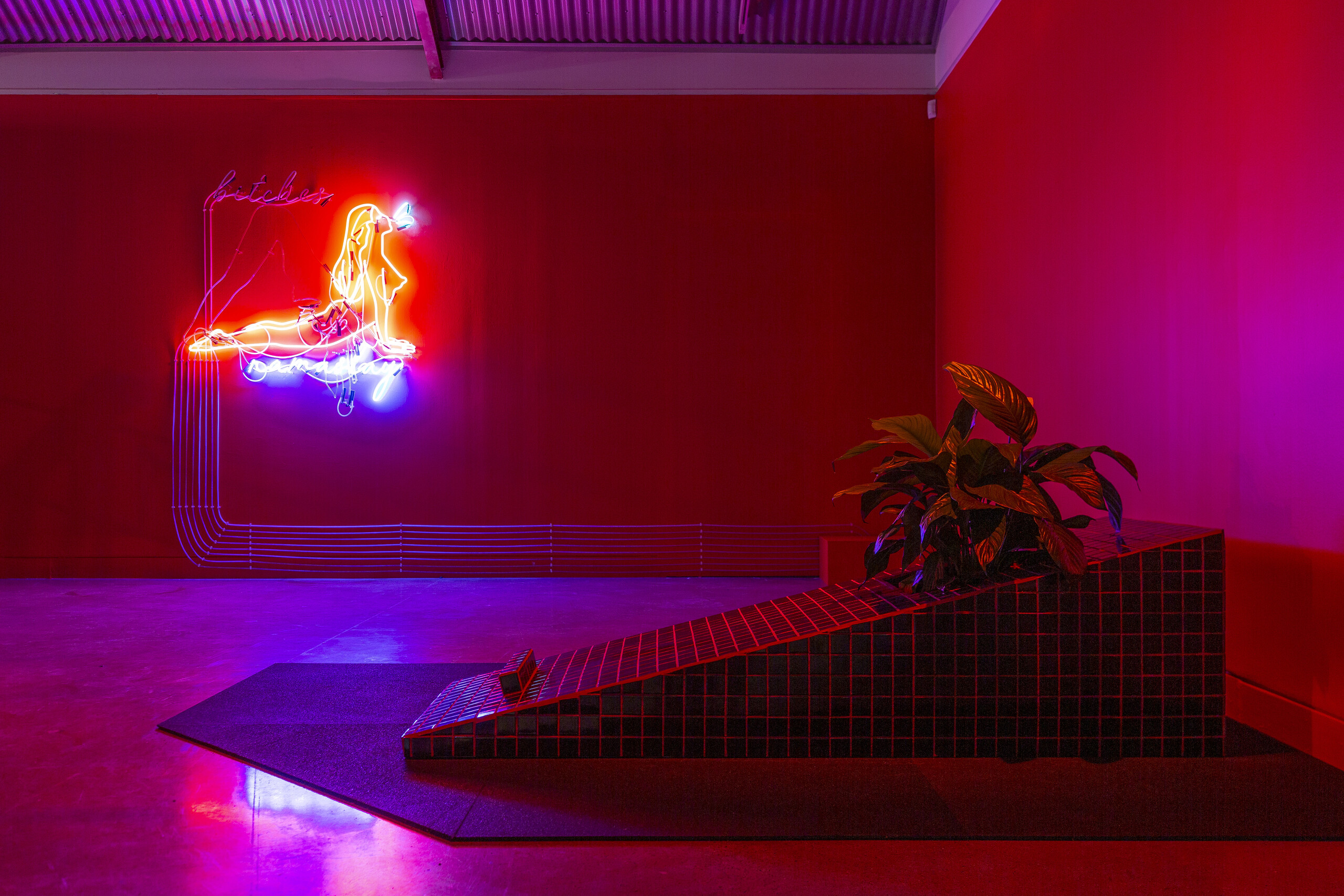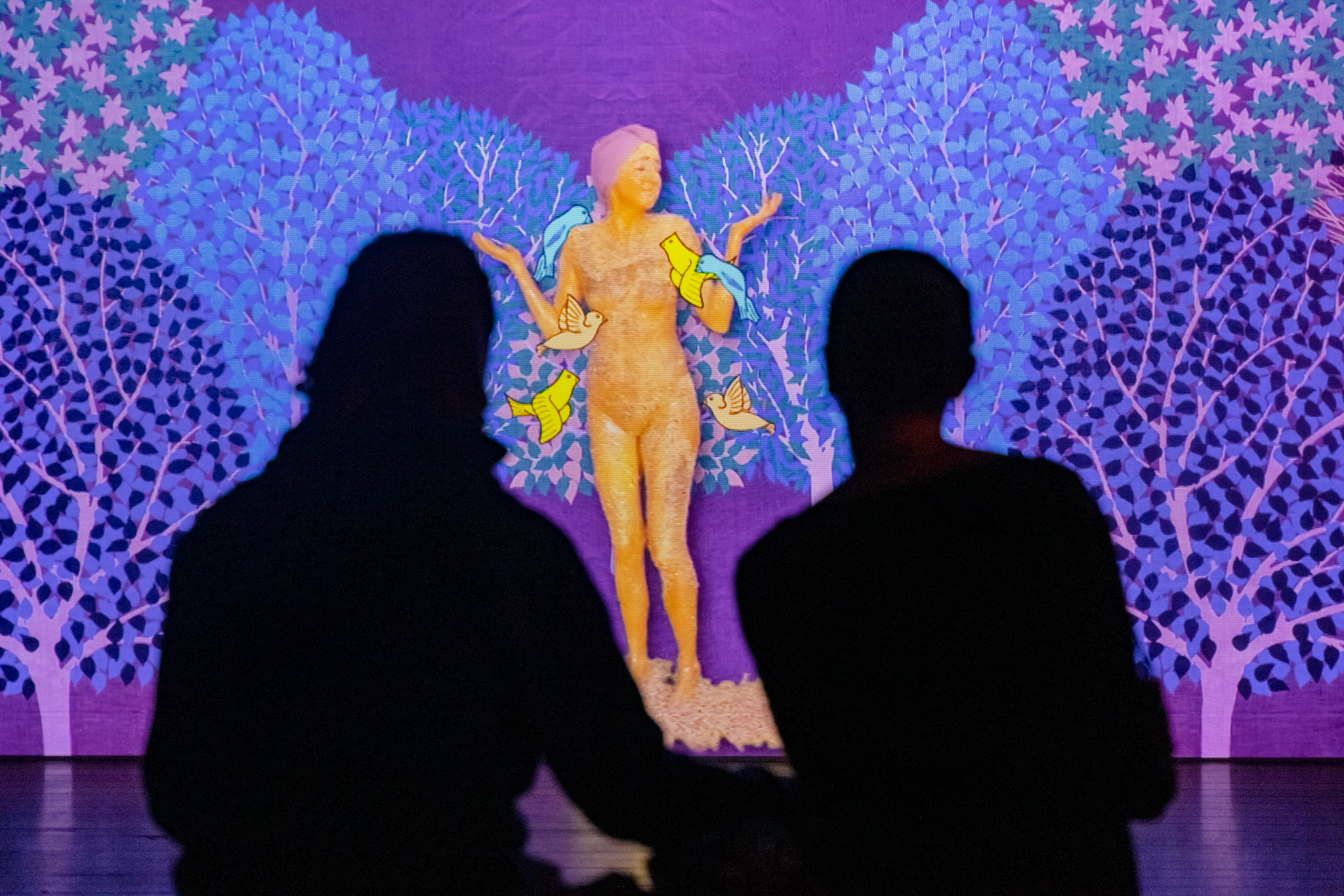Soul Seeker
Anastasia Murney
I purchased Katy B. Plummer’s experimental oracle deck from the pop-up Witch Shop Cement Fondu. The deck consists of forty-eight delicate cards designed for “intuitive reckoning of uncertain times”, inscribed with cryptic, poetic scraps of advice in narrow handwriting. Two cards I drew multiple times were ‘A Broken Arrow’ and ‘The Great Calm Evening’. I interpreted the first card as signifying being stuck at a crossroads, failing to bring something to fruition, tangled in the process of orienting and re-orienting. The second was more ambiguous. I sensed the spectre of rest lingering somewhere out of reach, a place to let weary bodies sleep. At the same time, the impending calm felt ominous, foreboding. A deep, dark stretch of nothing from twilight into night. I started to think about the exhaustion of conflicting options and red herrings, muddling through toxic structures towards the (perhaps unattainable) promise of liberation.
These are the two paradoxical impulses underpinning the restlessness of Cement Fondu’s current exhibition, Soul Seeker. On the one hand, there is the pursuit of spiritual transcendence and salvation that aspires to a place of calm and peace. And then, on the other, there is the relentless commodification of that pursuit, sucked into the hustle and grind of aggressive self-optimisation. Soul Seeker is the fourth in an annual series of exhibitions pairing the work of a local early career artist with an established international artist. This iteration pairs local Sydney artist Min Wong with the California-based Shana Moulton, drawing out their shared engagement with “New Age” culture. As the show reveals, there is no single, homogenous New Age culture; it is better conceived of as a late 20^th^/early 21^st^ century bricolage of religions, spiritual beliefs, symbols and rituals. Wong’s sculptural and installation practice, for example, explores the visual language of esoteric traditions, drawing on Christian, Taoist, and neopagan influences, together with her investment in extreme and cultic forms of fitness, such as Bikram Yoga and CrossFit. Moulton works across video, sculpture and performance to offer a more surrealist engagement with self-care industries as a trap for women, composing vivid domestic spaces that are at once placating and claustrophobic. In a tale almost as old as time, the quest to escape capitalism is absorbed back into its coercive and exploitative logics.

Together, Wong and Moulton’s work is a neat aesthetic fit. Soul Seeker feels clean and sharp, shiny and seductive. Wong’s flashing red-and-blue neon work Miss Boobs (2022), installed on the back wall of the main gallery, is a pithy encapsulation of the exhibition’s central exploit. The words “Namaslay Bitches” frame the outline of a female yogi, snapping back and forth between downward dog and upward dog. Up close, the subtle fizzle of the work permeates the space, making it feel like a nightclub or a 24/7 convenience store. In this way, Soul Seeker mostly unfolds on the level of satirical critique. There is a risk, however, that such jabs come at the expense of a more sincere conversation about the peculiar and growing traction of magic, myth and spirituality in contemporary art. Currently in Sydney and surrounds, there are a few exhibitions thematising the reconfiguration of belief and faith in our era of ecological catastrophe. For instance, Ultra Unreal at the MCA is an expansive offering of speculative world-making, where “ancient ceremonies merge with digital reincarnations”. At UTS Gallery, Hannah Brontë’s Neon Oracle features a wall of luminous placards that invoke visions, miracles and intuition—almost like incantations summoning collective resistance. And in Newcastle, at The Lock Up, is Deborah Kelly’s CREATION, an ongoing, experimental “climate change religion” full of collaborative rituals and performances. These examples point to a renewed investment in spirituality as a fertile site for building queer, feminist futures that break from the rationalising logics of patriarchal capitalism. At times, it feels like the potential to explore some of these bigger questions slip off Soul Seeker’s slick surfaces.


Wong’s ambitious sculptural installation, Lone Wolf (2022), is bathed in a red glow and occupies most of the main gallery. The work is a continuation of her attraction to evangelical fitness regimes, with CrossFit as a particular focus. In CrossFit, the gym is called “the box”, and this is what Wong reproduces: a pared back, steel rectangular prism, equipped with basic equipment such as rings, bars and rubber mats. The austere structure mirrors the CrossFit ethos of returning to a simple, timeless method of fitness. F45 might be a more recent iteration of this type of fitness, sharing the hallowing of method: the promise that there is a formula for perfection that can be consumed in an ever more compact form. Both CrossFit and F45 pivot on the idea of “functional” fitness: a type of fitness that supports the movements of everyday life. However, with a hefty price tag, most of their customers are white collar workers. Training for life, then, is not about building the strength and endurance to lug sandbags but to subject oneself to protracted stints at the desk. In other words, it is a regimen to protect ourselves against the health consequences of not using our bodies under the punishing conditions of late capitalism.
A few years ago, I used to walk past a CrossFit gym a few times a week in the midst of my own low-intensity exercise routine. I remember seeing people running and jumping on a narrow concrete strip outside the gym and feeling both amused and baffled—as if they knew something I didn’t. This is the peculiar thing about CrossFit, which is simultaneously covert and ultra-exhibitionist. Wong’s installation is bare and exposing, like the vaguely pornographic Miss Boobs on the wall (a wry take on the sleaziness and subsequent discrediting of Bikram Choudhury). It materialises what she describes in an artist talk as a “craving for structure”, reflecting on her own relationship with cultish fitness practices. But there are also softer and more ambiguous elements that accessorise the installation: two bean bags, several hanging pot-plants and a discrete collection of books leaning against a foam roller. The books speak to another aspect of Wong’s practice, which is her investment in counterculture and esoteric movements of the sixties and seventies. The spines of Starhawk’s The Spiral Dance (1979) Vera Stanley Alder’s The Finding of the Third Eye (1937) and Shirley’s Maclaine’s Going Within (1989) are just visible. Perhaps this operates as a subtle, introspective feminist counterpoint to the macho overtones of CrossFit and its ghoulish founder Greg Glassman, who insists in a promotional video: “we have a uniquely elegant solution to chronic disease right here”. The message is clear—vulnerability must be staved off at all costs. The books are suggestive of a different kind of secret knowledge, invoking not the gladiator of the box but the High Priestess of the Tarot deck.

Upstairs, on the mezzanine floor, is Shana Moulton’s Whispering Pines (2018), described as an “internet soap opera”. This is the most recent instalment in a video art series Moulton began in 2002. In fact, the new work premiered online as seven discrete chapters spanning about five minutes each. In Soul Seeker, these chapters are stitched together into one seamless narrative. Moulton’s alter ego Cynthia is the protagonist, a dreamer and hypochondriac who spends a lot of time drifting between cosmic and domestic space. Unlike Wong’s invisible superhuman, Cynthia does not crave discipline but comfort, seeking out therapeutic treatments to anesthetise and beautify her life. Her home is a colourful and cluttered environment filled with kitschy New Age objects: Yoga figurines, a touch lamp decorated with dolphins, a teardrop shaped humidifier, crystals and retro fitness gadgets. In the first chapter, she is cocooned in products that come to life and begin dancing cartoonishly, beckoning and overwhelming her. The visual experience of Whispering Pines is like browsing the internet, almost like watching digital origami. The images turn and twist, fold and wrap. All of the objects are modular and detachable, along with Cynthia herself, who is dissected and recomposed multiple times.
Significantly, Moulton’s Whispering Pines was inspired by environment activist Julia Butterfly Hill’s tree-sit from 1997—1999. She ascended an ancient Redwood tree (‘Luna’) in California to protect it from logging, camping out for 738 days. A version of Hill emerges in Chapter Two, singing to Cynthia through the television: “You are more powerful and magical than your mind could ever have believed”. In an interview, Moulton talks about the “kind of work I imagined I would do as an artist, blending my surrealist/absurdist approach with a type of direct activism. But I have yet to find a way of doing it … Cynthia becomes an expression of that failure”. In Chapter Five, Cynthia is seen climbing up a Redwood tree. The lyrics cite the same, albeit more urgent, conditions that drove Hill up into the high branches: “the planet is in danger / they’re cutting down the forests”. In fact, she doesn’t so much climb as swipe upward, akin to a vertical navigation of Google Earth. Unable to penetrate the digital representation, she glides across it. In the end, however, Cynthia loses her nerve and topples down, shattering into a thousand pieces. In this moment of thwarted activism, she becomes a futile white saviour character.

In Soul Seeker, it’s clear that both Wong and Moulton have a degree of affection for the multifariousness of New Age culture. Of course, New Age is problematic in its blatant borrowing from other cultures, diluting and othering beliefs into sanitised and saleable forms. In her zine on art and magic, Plummer refers to “new age practitioners (who) seem often to blithely revel in their traditions of plunder … obtaining permission from no one, (New Age) empties and repackages sacred practises from whichever direction catches its eye”. Wong and Moulton know this. Cynthia reflects this logic when she bounces around her living room with a rainbow feather duster, browsing and selecting various objects from a Mac taskbar along the side of the screen. However, at the same time, satirising New Age and its absorption into neoliberal capitalism feels a bit easy. Is there too much irony in Soul Seeker? Perhaps a term like “New Age” is an obstacle to getting to the heart of what is happening in terms of the distinctive resurgence of spiritual and magical ideas and, more importantly, what it can do for us. While Wong and Moulton speak to a longing for connection, it is solitude and/or self-optimisation that is the ultimate result, often at the crushing intersection of patriarchy and capitalism. The task ahead, I guess, is to keep orienting and re-orienting, searching for the great calm evening.
Anastasia Murney is a writer and teacher living on Gadigal land. She holds a PhD from the University of New South Wales.


